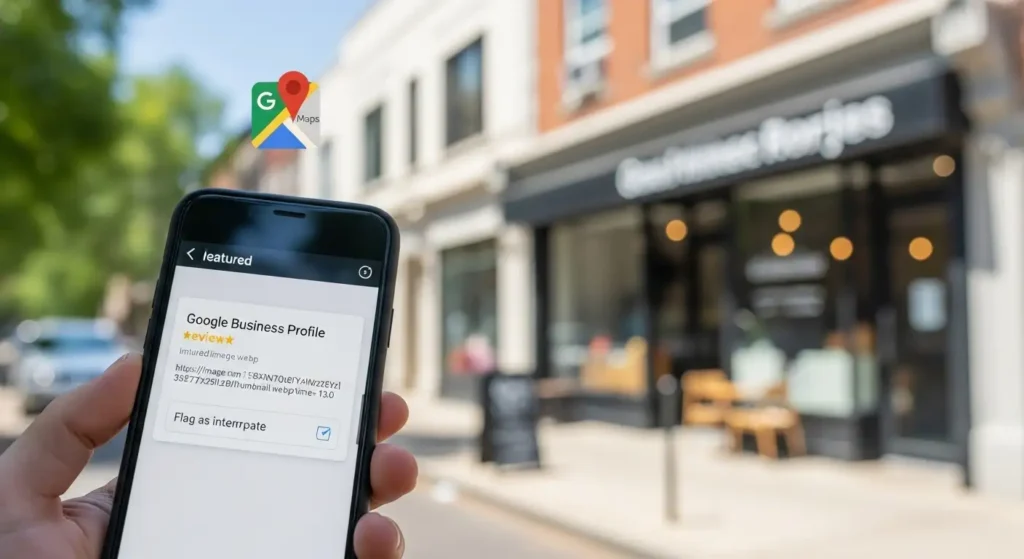Fake Google reviews can devastate your business reputation and cost you customers. Whether it’s a competitor trying to sabotage your success or a malicious individual posting false information, learning how to remove fake Google review content is essential for protecting your online presence. This comprehensive guide walks you through the entire process of identifying, reporting, and successfully removing fraudulent reviews from your Google Business Profile.
Google receives millions of review flags every month, but not all reports result in removal. Understanding exactly what constitutes a policy violation and how to present your case effectively dramatically increases your chances of success. We’ll show you proven strategies that work in 2024, based on Google’s current policies and real-world results.
By the end of this article, you’ll know precisely how to gather evidence, submit reports through the correct channels, and follow up effectively. You’ll also learn what to do when Google initially denies your request and how to protect your business from future fake reviews.
Understanding what qualifies as a fake Google review
Before you attempt to remove fake Google review content, you need to understand Google’s specific criteria for policy violations. Not every negative review qualifies as “fake,” and knowing the difference saves time and increases your success rate. Google’s review policies prohibit several specific types of content that genuinely warrant removal.
Fake reviews typically fall into several distinct categories. Reviews from people who never visited or interacted with your business are the most common type. These might come from competitors, disgruntled former employees, or individuals with personal vendettas. Google also prohibits reviews posted by the business owner themselves or their employees, as well as reviews incentivized through payments or discounts.
Content-based violations include reviews containing hate speech, profanity, graphic sexual content, or dangerous and illegal content. Reviews that include personal information about staff members or other customers also violate policies. Additionally, reviews that consist primarily of promotional content or links to other businesses aren’t allowed.
Reviews that don’t qualify for removal
Understanding what Google won’t remove is equally important. Negative reviews from legitimate customers, even if harsh or unfair, don’t violate policies. Reviews describing genuinely poor experiences, as long as they’re truthful and don’t contain prohibited content, will remain visible. Google doesn’t arbitrate disputes about facts or remove reviews simply because business owners disagree with them.
Reviews mentioning pricing concerns, service quality issues, or customer service problems are legitimate feedback, even when they damage your reputation. Similarly, reviews from customers who visited once years ago still qualify as genuine customer experiences. The key distinction is whether the reviewer actually interacted with your business and whether their content violates specific policies.
Common fake review scenarios
Competitor attacks often appear as multiple negative reviews posted within a short timeframe, sometimes from accounts with limited review history. These reviews frequently contain similar language or focus on the same alleged issues. Former employees may post reviews mentioning internal business operations that customers wouldn’t typically know about.
Personal attacks disguised as reviews often include details about the business owner’s personal life rather than the actual business experience. Reviews posted from locations far from your business serving local customers can also indicate fraud, especially when the reviewer has no apparent reason to visit your area.
How to identify fake reviews on your Google Business Profile
Successfully learning to remove fake Google review content begins with proper identification. Developing a systematic approach to analyzing suspicious reviews helps you build stronger cases for removal. Several telltale signs distinguish fake reviews from genuine negative feedback.
“`html
Examine the reviewer’s profile carefully. Click on their name to see their review history. Accounts created recently that have only reviewed your business or posted multiple negative reviews in a short period raise red flags. Profiles without photos, with generic names, or with no other Google activity often indicate fake accounts.
Analyze the review content itself for inconsistencies. Fake reviews often lack specific details about the actual customer experience. They might mention services you don’t offer or describe a location that doesn’t match your business. Reviews that focus on personal attacks rather than business performance typically violate policies.
Timing and pattern analysis
Note when reviews appear on your profile. Multiple negative reviews posted within hours or days of each other suggest a coordinated attack. Pay special attention to reviews appearing after you’ve had conflicts with competitors, terminated employees, or dealt with difficult situations.
Geographic inconsistencies provide valuable clues. If you run a local restaurant in Copenhagen and receive reviews from accounts primarily active in other countries, this warrants investigation. Google’s location data sometimes reveals that reviewers never visited your area.
Language and writing style indicators
Fake reviews often share similar language patterns, especially in coordinated campaigns. Multiple reviews using identical phrases or focusing on the same unusual complaints suggest fabrication. Reviews written in a style inconsistent with your typical customer demographic also merit scrutiny.
Extremely vague reviews that could apply to any business in your industry lack the specificity of genuine customer experiences. Conversely, reviews with excessive detail about internal operations that customers wouldn’t normally observe may come from former employees rather than customers.
Gathering evidence before you remove fake Google review content
Documentation significantly improves your chances of successful removal. Google’s review team makes decisions based on evidence, so thorough preparation is essential. Building a comprehensive evidence file before submitting your report demonstrates the review’s illegitimacy clearly and convincingly.
Start by taking screenshots of the fake review itself, including the date posted, reviewer name, and complete content. Capture the reviewer’s profile page showing their review history, account creation date, and any other suspicious patterns. Save these images with clear filenames including dates for easy reference.
Document your business records thoroughly. Pull transaction logs, appointment schedules, reservation systems, or customer databases for the date the reviewer claims to have visited. If no record exists of this customer, this evidence supports your case. For businesses requiring appointments or reservations, the absence of records is particularly compelling.
Customer interaction documentation
Review your communication records including emails, text messages, phone logs, and customer service tickets. If the reviewer describes interactions that never occurred, documentation proving this strengthens your report. Security camera footage, when available and relevant, provides powerful evidence, though Google doesn’t always review video submissions.
For reviews claiming specific incidents occurred, gather evidence proving otherwise. If a review claims your restaurant served spoiled food on a particular date, but you were closed that day, documentation of your closure proves the claim false. Similarly, reviews mentioning employees by name who never worked for you demonstrate fabrication.
Identifying the reviewer when possible
Sometimes you can identify who posted a fake review based on timing and circumstances. If negative reviews appeared immediately after you terminated an employee, rejected a vendor, or had a dispute with a competitor, note these connections. While you shouldn’t make accusations in your Google report, understanding the source helps you build your case.
Check whether the reviewer has posted similar negative reviews for your competitors or has a pattern of posting only negative reviews across many businesses. This pattern suggests a serial fake reviewer, which Google takes seriously. Document these patterns with screenshots from the reviewer’s profile.
“`
Step-by-step process to remove fake Google review content
Now that you’ve identified the fake review and gathered evidence, it’s time to submit your removal request. Google provides several reporting methods, and choosing the right approach for your situation improves your success rate. Following the correct procedure ensures your report reaches the appropriate review removal team.
The primary method for reporting reviews is directly through Google Maps or your Google Business Profile. Open Google Maps and search for your business. Locate the fake review in your review list. Click the three-dot menu icon in the top right corner of the review. Select “Report review” from the dropdown menu.
Google will present several violation categories. Choose the option that most accurately describes why the review violates policies. Common options include “Conflict of interest” for competitor reviews, “Offensive content” for profanity or hate speech, and “Off-topic” for reviews not about the actual business experience. Select carefully, as the category determines which review team evaluates your report.
Reporting through Google Business Profile dashboard
Business owners can also report reviews through their Google Business Profile management dashboard. Log into your Business Profile at business.google.com. Navigate to the “Reviews” section in the left sidebar. Find the problematic review and click the flag icon or three-dot menu. Select the appropriate violation reason and submit your report.
This method allows you to manage multiple review reports and track their status more easily. The dashboard provides better visibility into your review management efforts and keeps all your business information in one place. For businesses managing multiple locations, this centralized approach saves considerable time.
Using Google’s legal removal request form
For reviews containing defamatory content, personal information, or other serious violations, Google offers a legal removal request form. Access this form by searching for “Google legal removal requests” or visiting support.google.com/legal. This process is more formal and requires detailed information about the violation.
The legal removal form asks for specific details about your business, the exact URL of the review, and a detailed explanation of the policy violation. You’ll need to describe why the content is illegal or violates Google’s policies. This method is particularly effective for reviews containing false statements of fact that damage your reputation, personal information about employees, or content that violates local laws.
What happens after you submit your report
After submission, Google’s automated systems initially screen your report. If the violation is clear and matches known patterns, removal may occur within 24-48 hours. More complex cases require human review, which can take several days to two weeks. During this period, the review remains visible on your profile.
Google typically doesn’t send detailed notifications about review removal decisions. If the review disappears from your profile, your report was successful. If the review remains after two weeks, Google likely determined it doesn’t violate policies. You won’t receive an explanation for denied reports through the standard flagging process.
Following up when Google denies your request to remove fake Google review
Google’s initial denial doesn’t mean your case is closed. Many successful removals happen after persistent, strategic follow-up efforts. Understanding why reports get denied and how to strengthen your case leads to better outcomes on subsequent attempts.
First, wait 48-72 hours after your initial report before attempting follow-up. This gives Google’s review team adequate time to complete their evaluation. Submitting multiple reports immediately can actually harm your case by appearing as spam. Patience combined with strategic persistence yields better results than aggressive repeated flagging.
If the review remains after two weeks, consider submitting a new report with additional context. While the standard flagging tool doesn’t allow detailed explanations, you can try reporting through different channels. The Google Business Profile support forum allows you to describe your situation in detail and request human review from Google staff.
Escalating through Google Business Profile support
“`html
Contact Google Business Profile support directly through their help center. Navigate to support.google.com/business and select “Contact us.” Choose the review-related issue category and request a call or chat with support. During this interaction, explain your situation clearly, reference your previous report, and provide your evidence.
Support representatives can sometimes escalate cases to specialized review teams. Be professional, concise, and factual in your communication. Avoid emotional language or accusations. Focus on specific policy violations and the evidence proving the review is fake. Representatives respond better to clear, documented cases than to complaints about unfair negative reviews.
Submitting additional evidence
If your initial report lacked strong evidence, gather additional documentation before resubmitting. Enhanced evidence might include sworn statements from employees, detailed business records, or documentation of patterns across multiple fake reviews. The stronger your evidence package, the more likely Google will remove the review.
Consider creating a concise document summarizing your case with embedded screenshots and evidence. While you can’t attach files to standard review reports, you can reference this documentation when communicating with support representatives or posting in help forums. Some business owners successfully share Google Drive links to evidence folders when working with support teams.
Utilizing the Google Business Profile community forum
Google’s Business Profile community forum provides another escalation path. Product experts and Google staff monitor these forums and sometimes intervene in complex cases. Create a detailed post explaining your situation, but avoid sharing personal information or specific details that could identify individuals.
Forum contributors can offer advice on strengthening your case or identifying which specific policy the review violates. Occasionally, Google employees respond directly to forum posts and initiate review removal processes. This public forum approach works particularly well for unusual cases or situations involving multiple fraudulent reviews.
Legal options when you can’t remove fake Google review content through standard channels
When Google’s internal processes fail to remove demonstrably fake reviews, legal action becomes an option. While legal approaches require more resources, they can be effective for reviews causing significant business damage. Understanding your legal options helps you make informed decisions about protecting your reputation.
Defamation law varies by jurisdiction, but generally allows action against false statements presented as fact that damage your reputation. In Denmark, defamation falls under both criminal and civil law. Reviews containing provably false factual claims may qualify as defamation, giving you grounds for legal action against the reviewer.
The first step is consulting with an attorney specializing in defamation or internet law. They can evaluate whether the review meets legal standards for defamation and advise on the likelihood of success. Attorneys can also send cease-and-desist letters to reviewers when their identity is known, often resulting in voluntary review removal without litigation.
Court orders for review removal
If you obtain a court judgment declaring a review defamatory, Google will remove it upon receiving proper legal documentation. This process involves filing a lawsuit against the reviewer, proving defamation in court, and obtaining a removal order. While time-consuming and expensive, this approach guarantees removal for truly defamatory content.
Danish courts can issue orders requiring Google to remove content that violates Danish law. The EU’s e-Commerce Directive provides frameworks for requiring platforms to remove illegal content. An attorney familiar with Danish and EU digital law can guide you through this process and determine whether your case warrants legal action.
Identifying anonymous reviewers
Many fake reviews come from anonymous or pseudonymous accounts. Legal processes called “John Doe” lawsuits allow you to sue an unknown defendant and subpoena Google for information identifying the reviewer. Once identified, you can pursue defamation claims directly against the individual.
“““html
This process requires demonstrating to a court that you have a legitimate case and that identifying the reviewer is necessary for pursuing it. Courts balance your right to protect your reputation against the reviewer’s right to anonymous speech. Cases involving clearly false, damaging statements are more likely to succeed in obtaining identification orders.
Cost-benefit analysis of legal action
Legal action is expensive and time-consuming. Attorney fees for defamation cases typically start at several thousand euros and can escalate significantly. Consider whether the business damage from the fake review justifies this investment. For single reviews with limited impact, legal action rarely makes financial sense.
However, for businesses facing coordinated fake review campaigns, reviews containing serious false accusations, or situations where fake reviews have caused documented financial harm, legal action may be worthwhile. Particularly valuable for professional service providers, medical practices, or businesses where reputation is critical to operations.
Responding professionally while working to remove fake Google review
While pursuing removal, responding professionally to fake reviews protects your reputation with potential customers. Your response demonstrates your professionalism and alerts readers that the review may be fraudulent. A well-crafted response can actually mitigate damage until review removal occurs.
Keep responses brief, professional, and factual. Acknowledge that you’ve seen the review and state clearly that you have no record of this customer or interaction. Avoid emotional language, personal attacks, or detailed accusations. Your response should appeal to reasonable readers who can discern legitimate concerns from fake attacks.
Example response: “Thank you for your feedback. We’ve carefully reviewed our records for the date you mentioned, and we have no record of your visit or the situation you described. We take all customer concerns seriously and would appreciate the opportunity to discuss this further. Please contact us directly at [contact information] so we can investigate and resolve any legitimate issues.”
What to avoid in your responses
Never accuse reviewers of lying or being fake directly in your public response. This can appear defensive and unprofessional to potential customers. Avoid mentioning competitors, former employees, or specific individuals you suspect posted the review. Such accusations can escalate situations and potentially create legal liability for you.
Don’t provide excessive detail about your business operations or internal processes in an attempt to disprove the review. Long, defensive responses often backfire by making you appear guilty or overly concerned. Keep responses concise and focused on inviting legitimate resolution while subtly indicating the review’s questionable nature.
Using responses to demonstrate your legitimacy
Your response pattern across all reviews demonstrates your business character. Respond professionally to all reviews, both positive and negative. This consistent engagement shows potential customers that you’re attentive and professional. When fake reviews appear among many positive reviews with professional responses, readers can more easily identify the outliers.
Encourage satisfied customers to leave reviews regularly. A steady stream of authentic positive reviews dilutes the impact of occasional fake negative reviews. Potential customers evaluate overall patterns rather than individual reviews, so maintaining a strong positive review base protects you from fake review damage.
Preventing future fake reviews on your Google Business Profile
Prevention is more effective than removal. While you can’t completely eliminate fake review risk, several strategies significantly reduce your vulnerability. Proactive reputation management makes your business a less attractive target and helps you respond quickly when fake reviews appear.
Monitor your Google Business Profile daily. Set up Google alerts for your business name and check your profile regularly. Early detection allows you to report fake reviews immediately, before they accumulate and damage your reputation. Many business owners discover fake reviews weeks or months after posting, reducing removal chances.
“““html
Enable review notifications in your Google Business Profile settings. Google can email you immediately when new reviews appear. This real-time awareness lets you respond quickly to both legitimate reviews and fake ones. Rapid response demonstrates attentiveness to customers and allows immediate action against policy violations.
Building a strong authentic review base
The best defense against fake reviews is an abundance of authentic positive reviews. Develop systematic processes for requesting reviews from satisfied customers. Train staff to ask happy customers to share their experiences online. Provide easy instructions and direct links to your Google Business Profile review page.
However, never incentivize reviews with discounts, payments, or rewards. This violates Google’s policies and can result in penalties for your business. Instead, focus on delivering excellent service and making the review process convenient. Most satisfied customers will review you when asked politely and given an easy method.
Documenting customer interactions
Maintain detailed records of customer interactions, transactions, and appointments. These records become invaluable evidence when disputing fake reviews. Customer relationship management (CRM) systems, appointment scheduling software, and point-of-sale systems create automatic documentation that proves who actually patronized your business.
For service-based businesses, document all consultations, appointments, and interactions. Email confirmations, signed contracts, and payment records establish clear customer relationships. When someone claims to be a customer but appears in none of your records, this documentation strongly supports your fake review reports.
Security and access management
Protect your Google Business Profile access credentials carefully. Disgruntled employees with profile access can post fake reviews or manipulate your listing. Remove access immediately when employees leave your organization. Use strong passwords and enable two-factor authentication on your Google account.
Limit the number of people with management access to your profile. Each additional user increases security risks. Regularly audit who has access and remove unnecessary permissions. Consider using role-based access that limits what different team members can modify.
Tools and services for managing your Google review reputation
Various tools and services help you monitor reviews, gather evidence, and manage your online reputation more effectively. While no service can guarantee fake review removal, legitimate tools streamline the monitoring and response process. Understanding which tools provide genuine value helps you invest wisely in reputation management.
Reputation management platforms like BirdEye, Podium, and ReviewTrackers aggregate reviews from multiple platforms including Google. These services provide centralized dashboards for monitoring all your reviews, automated alerts for new reviews, and response management tools. They help you identify suspicious patterns and respond quickly to both legitimate and fake reviews.
These platforms typically cost between €50-500 monthly depending on features and business size. For multi-location businesses or those heavily dependent on online reviews, this investment often pays for itself through improved review management efficiency. Single-location small businesses may find free Google tools sufficient for their needs.
Free monitoring tools
Google Alerts provides free monitoring for your business name. Set up alerts to receive email notifications whenever your business is mentioned online. While not as comprehensive as paid services, Google Alerts offers basic monitoring at no cost. Configure alerts for your business name, common misspellings, and your business name plus keywords like “review.”
Google Business Profile’s built-in notifications system alerts you to new reviews directly. Enable email notifications in your profile settings to receive immediate alerts. This free tool provides everything small businesses need for basic review monitoring without additional software costs.
Evidence gathering and documentation tools
Screenshot tools like Snagit, Lightshot, or built-in operating system screenshot functions help you document fake reviews and reviewer profiles. Browser extensions like Full Page Screen Capture allow you to capture entire web pages including review profiles with extensive histories. Organize screenshots in dated folders for easy reference when reporting reviews.
“““html
Cloud storage services like Google Drive, Dropbox, or OneDrive provide secure locations for storing evidence. Create dedicated folders for review documentation including screenshots, business records, and correspondence. This organization makes evidence easily accessible when communicating with Google support or legal counsel.
What to avoid: fake review removal services
Numerous services claim they can remove any negative review for a fee. Most of these services are scams that either take your money without results or use methods that violate Google’s terms of service. Some services post fake positive reviews to bury negative ones, which can result in penalties for your business.
Legitimate reputation management services focus on monitoring, responding, and helping you report violations through proper channels. They don’t guarantee removal and don’t use black-hat tactics. Be extremely skeptical of services promising guaranteed review removal, especially for legitimate negative reviews. These promises are red flags indicating fraudulent services.
If you choose to work with a reputation management service, verify their methods comply with platform policies. Ask specifically how they achieve removals and avoid any service that won’t explain their process clearly. Reputable services act as consultants helping you navigate proper removal channels, not as intermediaries claiming special access to Google’s review team.
Understanding Google’s review policies and future changes
Google regularly updates its review policies and enforcement mechanisms. Staying informed about these changes helps you adapt your strategies and understand what violations Google prioritizes. Recent years have seen significant policy evolution as Google responds to increasing fake review problems across its platform.
Google’s current policies prohibit reviews from individuals who haven’t genuinely experienced your business. The policies explicitly ban reviews posted by business owners or employees, reviews incentivized through payments or discounts, and reviews from competitors. Content restrictions prohibit hate speech, harassment, personal information, sexually explicit content, dangerous or illegal content, and spam.
In 2023 and 2024, Google enhanced its automated detection systems for fake reviews. Machine learning algorithms now identify suspicious patterns including coordinated review campaigns, reviews from known fake accounts, and content matching fake review templates. These improvements have increased automatic removal rates for clearly fraudulent reviews.
Verification requirements and their impact
Google has gradually increased verification requirements for leaving reviews. Reviewers now need verified Google accounts with activity history. This change makes creating fake review accounts more difficult but hasn’t eliminated the problem entirely. Sophisticated fake review operations still bypass these protections using aged accounts and varied activity patterns.
Some jurisdictions are implementing stricter verification requirements. The European Union’s Digital Services Act includes provisions requiring platforms to combat fake reviews more aggressively. These regulatory changes may lead to stricter verification and more robust fake review detection in coming years.
Anticipated future developments
Industry experts anticipate several developments in review platform policies. Increased identity verification for reviewers may become standard, potentially requiring phone number verification or other authentication methods. Enhanced transparency about reviewer history and credentials could help users evaluate review credibility.
Artificial intelligence will likely play a larger role in both creating and detecting fake reviews. As AI-generated review text becomes more sophisticated, platforms will need increasingly advanced detection methods. Google and other platforms are investing heavily in AI-powered fake review detection systems.
Staying current with policy changes
Subscribe to Google’s official Business Profile blog and help documentation updates. Google announces significant policy changes through these channels. Join online communities of business owners and reputation management professionals where members share experiences with review removal and policy changes.
Review Google’s official policies quarterly to stay informed about updates. The policies are available at support.google.com/contributionpolicy. Understanding current policies ensures your removal requests align with Google’s criteria and increases your success rate.
“`
Learning to remove fake Google review content effectively requires understanding policies, gathering strong evidence, following proper reporting procedures, and persisting when initial attempts fail. While Google’s systems aren’t perfect, they do remove reviews that clearly violate policies when business owners present compelling cases.
Remember that not every negative review qualifies as fake or removable. Focus your efforts on reviews that genuinely violate Google’s policies and for which you have solid evidence. Invest equal energy in preventing future fake reviews through proactive reputation management and building a strong base of authentic positive reviews.
The process of removing fake reviews can be frustrating and time-consuming. However, protecting your online reputation is essential in today’s digital marketplace. By following the strategies outlined in this guide, you significantly increase your chances of successful removal while maintaining your professional reputation throughout the process.
Stay persistent, remain professional, and remember that each fake review removal protects not just your business but the integrity of the entire review ecosystem. Your efforts contribute to a more trustworthy online environment for businesses and consumers alike.











